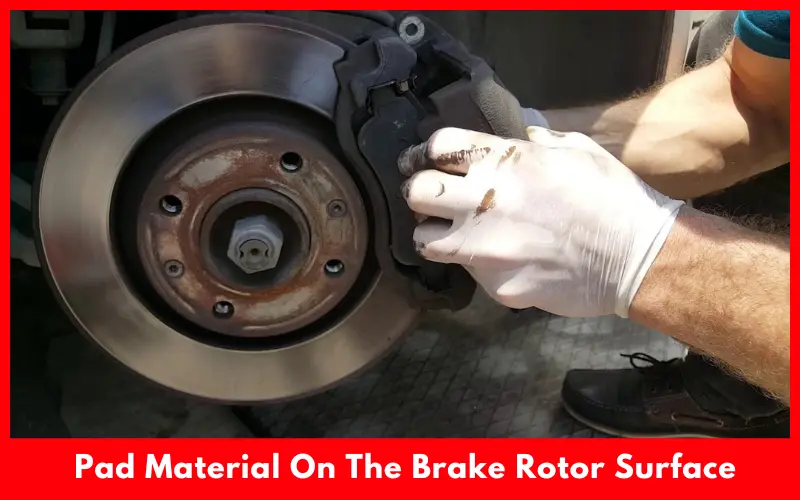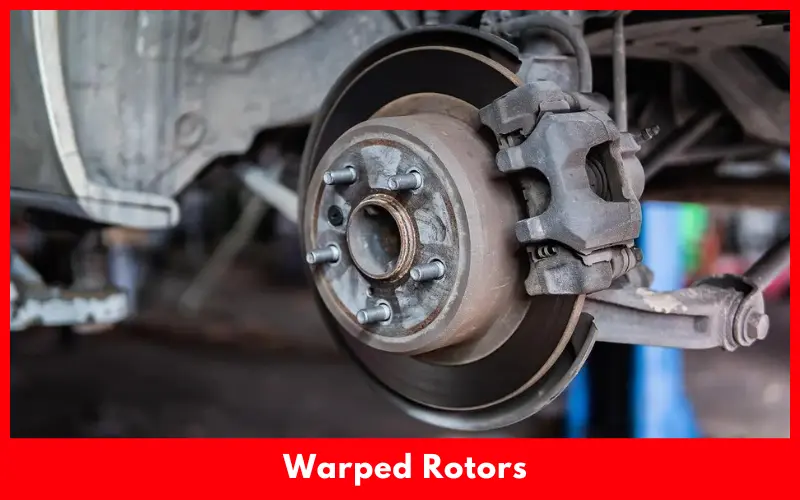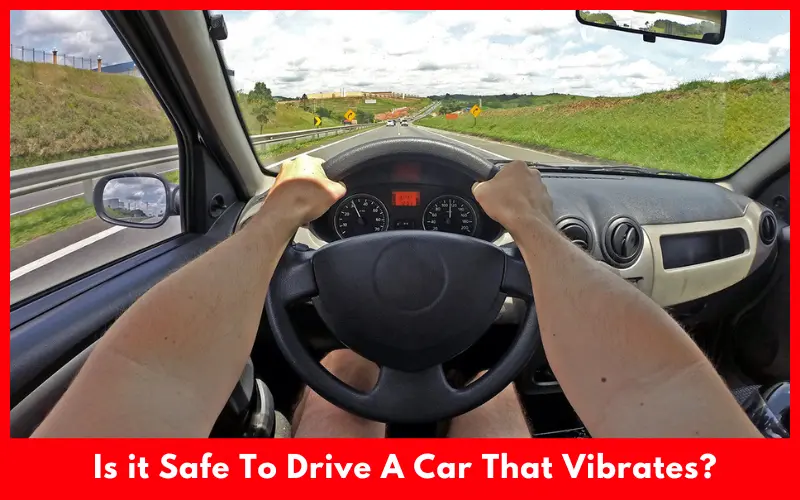If your car vibrates in drive but not in neutral, it can be the result of worn tie rod ends, damaged spark plugs, warped rotors, damaged engine mounts, or bad wheel bearings. Your car can also vibrate when comes to a stop or when parked due to these serious reasons.
If the car vibrates excessively in drive mode, check the tires and wheel bearings and tow it to the mechanic for deep diagnosis.
Article Summary
Why Does My Car Vibrate in Drive But Not in Neutral?
Your car can vibrate during driving due to too slow idle setting or a faulty spark plug. When you set the gear into neutral, it speeds up the engine’s RPMs. Hence the vibration goes away.
In neutral, there are no gears mesh together and the drive train does not carry any load to the engine through the torque converter or clutch. So, you don’t also feel any vibration in neutral. The other possible issues are:
1. Worn Tie Rod Ends in The Steering System
If your car vibrates when hits the brakes during driving and goes away in neutral, it can be the result of worn-out suspension components like the steering system’s tie rod ends. To check the condition of the front suspension, jack up the vehicle and wiggle the wheel up and down and side to side.
If the suspension exhibit plays, the tie rod end or other components are worn out. Aggressive wear on the ties is also a sign of worn-out suspension components.
If the suspension plays with tight steering components, the hub bearing may get damaged. If so, you must repair or replace the suspension or bearing to avoid causing a loss of control and a catastrophic incident. It can also increase wear on the tires and boost maintenance costs.
2. Pad Material On The Brake Rotor Surface
If there is a pad material built up on the brake rotor surface, your car can vibrate during driving. It is a bit difficult to diagnose the pad build-up as brake pads leave an uneven material layer on it. It can damage the front suspension by transmitting repeated vibrations from the brakes.

3. Warped Rotors
Warped rotors can also cause vibrations during hitting the brakes while driving. The brakes can get very hotter during driving even at cruising speeds and it can warp the steel in the rotors and cause vibration. You can reduce the vibration by simply slowing down the speed. If the rotors get damaged enough, you may need to replace them.

4. Broke or Cracked Engine Bolts or Gearbox Mounts
If your car vibrates or the engine trembles excessively during driving or parking with the engine running, it’s a sign of damaged engine bolts or gearbox. Engine mounts hold the engine in place and dampen the vibration.
Older or weaker engine mounts can’t dampen engine vibration effectively particularly when the engine carries load during driving. To fix the problem, inspect the power mounts of the engine by an expert mechanic.
The transmission and engine mount also allow the drivetrain to transfer vibration to the car’s body, when in gear. But when not in gear, the drivetrain gets disconnected and can’t transfer vibration to the car body which becomes noticeable when you come to a stop.
5. Engaged Transmission
When driving the car, the transmission engages the engine and power keeps flowing into the transmission and other parts. The driver’s foot on the brake prevents that power from turning the wheel.
During driving with the brake off, cars roll forward a little bit and it may cause drag to the engine. Therefore you may feel a vibration. You may also hear a bit of noise at this as the engine’s torque is dampened with a torque converter.

But in neutral, the transmission and engine remain separated. Since no power transfer, transmission moves freely. So you don’t feel any vibration. In this case, you should feel normal unless the vibration is erratic or strong.
6. Damaged Wheel Bearings
If you experience vibration from steering wheel during driving, it can be a result of the damaged wheel bearing. The hubs in the middle of the wheel bearing hold it tightly and allow it to run on the axle’s shaft.

If the hub gets damaged, the tire and other suspension components will wear out unevenly. Hence your car can vibrate while driving particularly at higher speeds. For the same reason, you may also struggle to turn the steering wheel.
To check the wheel bearing, turn the wheel sharply to hear a humming noise. You can also turn the car off and spin the wheel to notice for wobbling.
Is it Normal for Vehicles to Vibrate When Braking at High Speeds?
Experiencing vibration during driving is not a normal issue. It’s an uncomfortable feeling and may create some noise issues. Ignoring this problem long time can make driving the car irritating and reduce the braking performance. It can also damage other components like wheel bearings and steering linkage.
However, it won’t trigger further issues until the rotor and pads are in service. Still, you should inspect the car to avoid causing severe damage in the future.
Is it Normal for A Vehicle To Vibrate When Driving At Certain Speeds?
No, your car shouldn’t vibrate during driving at certain speeds not when come to a stop. Vibrating during driving is an indication of serious internal issues and it can damage the tail shaft center bearing. Due to this problem, your car can vibrate at a certain speed like 40 to 60 km/h even when the bearing is working well.
If the tail shaft center support bearing becomes loose or gets damaged, the insulator and bracket can get separated from the bearing and cause vibration at a certain speed. In this case, you may need to replace the tail shaft center support bearing.
Is it Safe To Drive A Car That Vibrates?
Driving a vibrating car isn’t a smart idea. However, once you determine the reasons and feel the problem is simple and won’t put you at risk, you can keep driving. For example, if your car vibrates during driving but not when in parked or neutral, and components like braking, steering, suspension, or drive train are responsible, don’t drive.

But if your car vibrates because of transmission problems, you can drive slowly and carefully. So if you suddenly experience car vibration during driving and can’t decide anything, check the tires and wheel bearings.
If the wheels are in line and don’t wobble as well as steering joints aren’t worn out, drive the vehicle to the nearest auto repair shop to identify the underlying issue.
How To Troubleshoot If Car Vibrates in Drive But Not in Neutral?
If your car vibrates in the drive but not in neutral, you’ll need to inspect all the related components including suspension, engine mounts, and transmission to determine the underlying issue. In this case, you can start by visually inspecting the engine for disconnected or loose wires, hoes, or other components.
With the engine running, listen for unusual sounds like lawnmower, popping, hissing, or knocking. You can also use an OBD-II scanner to check if any faulty parts leave an error code. In the transmission, check the level and quality of the fluid.
In a safe spot, shift through all gears to find out if vibration happened in any specific gears. Another related component is the drive shaft where you can check for damage or signs of imbalance. You can also rotate the drive shaft to determine if it spins smoothly.
In the engine mounts, look for cracks, wear, and damaged components. With the engine running, shift neutral to drive mode to find out the movement of the failing mount.
If you notice any faulty parts or unusual noise, your next step should be hiring an expert. Fixing problems like worn tie rod, warped rotors, or damaged wheel bearing need high DIY skills and enough tools.
FAQs
Why Does My Car Vibrate When in Drive Mode?
Your car can vibrate excessively in drive mode due to problems with flat tires, wheels, steering, brakes, or suspension. The potential problems are improper tire and wheel balance, separated tire tread, uneven tire wear, and damaged wheels and suspension systems.
Why Does My Car Shake At Idle in Gear Only?
Your car can vibrate at idle in gear due to a worn throttle position sensor, loose gas cap, faulty engine mount, or damaged spark plugs. It needs proper troubleshooting to determine the exact source of the problem.
Why Does My Car Shake in Drive But Not in Park?
A car can shake in the drive but not in the park due to worn transmission and engine mounts. Engine mounts can wear out over time and cause the transmission and engine to move and shake excessively. Out-of-balance tires or wheels may also trigger the same issue, particularly at higher speeds.
Final Words
If your car vibrates in the drive but not in neutral, it means your vehicle is getting old and needs more maintenance than earlier. Over time, suspension components start wearing out and introduce various problems including car shaking during driving.
However, damaged wheel bearings or engine mounts may also be responsible. So regular inspection can help you enjoy smooth driving.

